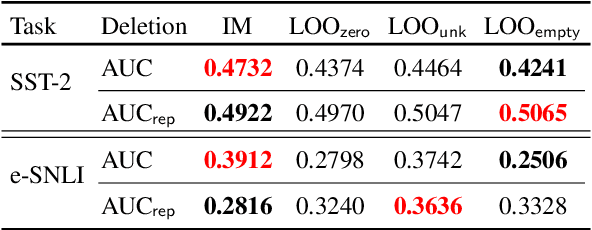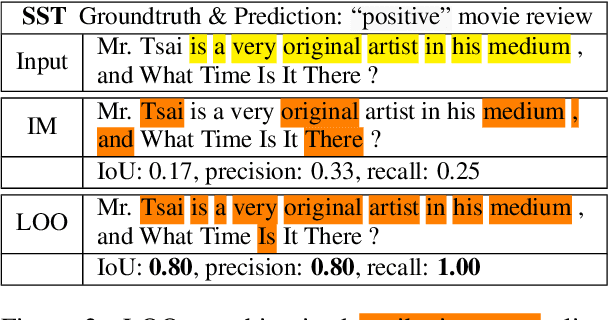Double Trouble: How to not explain a text classifier's decisions using counterfactuals synthesized by masked language models?
Paper and Code
Oct 22, 2021



Explaining how important each input feature is to a classifier's decision is critical in high-stake applications. An underlying principle behind dozens of explanation methods is to take the prediction difference between before-and-after an input feature (here, a token) is removed as its attribution - the individual treatment effect in causal inference. A recent method called Input Marginalization (IM) (Kim et al., 2020) uses BERT to replace a token - i.e. simulating the do(.) operator - yielding more plausible counterfactuals. However, our rigorous evaluation using five metrics and on three datasets found IM explanations to be consistently more biased, less accurate, and less plausible than those derived from simply deleting a word.
* 9+8 pages, 4+12 figures
 Add to Chrome
Add to Chrome Add to Firefox
Add to Firefox Add to Edge
Add to Edge